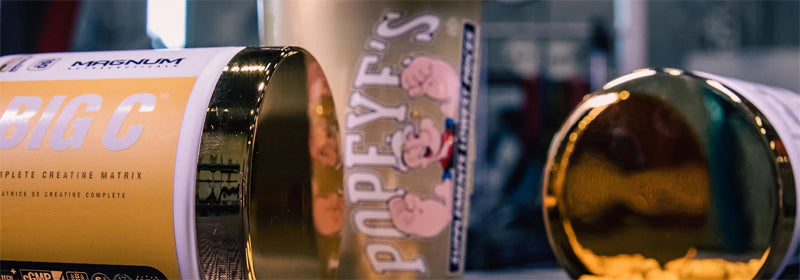
The Creatine Bible
No supplement has created more conversation in the fitness industry than creatine. With decades of research and protocol behind it, you’d think it’s a cut-and-dry topic that’s been well defined and everyone understands. Well, it turns out that, as with most things in life, it isn’t so simple. There’s a lot of information about creatine out there, and not all of it is high-quality. Let’s explore what exactly creatine is, from how it interacts with your physiology, to how it affects performance. Of course, this is a big topic, much more than we could comfortably fit into one quick blog post, so we’ll have to break this one into a few pieces to make it more digestible.
With all that in mind, let’s start at the beginning. What is creatine? It’s an amino acid-derived compound that gets made in the liver from the amino acids arginine, methionine and glycine. That’s right, if your liver makes it, then that also means you have creatine within you right now! Not only that, but you take in more creatine any time you eat chicken, beef or fish. It’s a big staple of animal physiology!
So, what does it do? Creatine works in the body’s Phosphagen system, which you can think of as a big energy exchange. Actions take energy, and the currency for it are these energy-packed molecules called “Phosphate”. Want to flex? That costs phosphate. Want to lift something? Phosphate again. The main carrier for this phosphate is called ATP, or adenosine triphosphate. Your body makes a ton of ATP, mostly from your mitochondria and sends it to perform actions throughout the body. Cool, right?
Now comes the creatine. It’s a storage unit for phosphate – your body makes creatine, and then charges it full of phosphate, turning it into creatine phosphate (CP). Now, CP can be used for energy wherever the body needs and lacks ATP. This system is useful everywhere, but particularly shines in the brain and muscles. Your brain’s usage of creatine phosphate is an interesting topic, but not one we’re going to focus on today (perhaps a topic for another time?)
For your muscles, though, CP is needed during intense exercise. It’s the main thing that allows you to push as much as you do in the gym!
Intense exercise, also known as Anaerobic exercise, is the kind where your body can’t produce ATP. You’ll have to rely on existing ATP which is very limited – only enough to maintain a few seconds of activity if not replenished. If you’ve hit this limit, and still aren’t done working, rather than total failure, creatine phosphate comes in, who can donate phosphate and allow your muscles to keep working beyond their limits! This means the more creatine stores you have, the more you can work out under high stress.
You can think of creatine as a backup battery system. The better the backup system, the better you can operate when the main system goes down! Taking a creatine supplement maximizes your backup – increasing your creatine stores. This turns into more creatine phosphate that your body can use to push harder!
The result? Extra reps in the gym, or that much more effort in your training. When it comes to our body, those little differences can mean a world of difference in our progress!
This was a lot of science and technical talk for our first blog (Sorry!). But with all of the technical stuff out of the way, our next blog will focus on how creatine works for your training, both for sports and in the gym, plus why it’s useful in your training programs!
By : Team Popeye's Quebec


